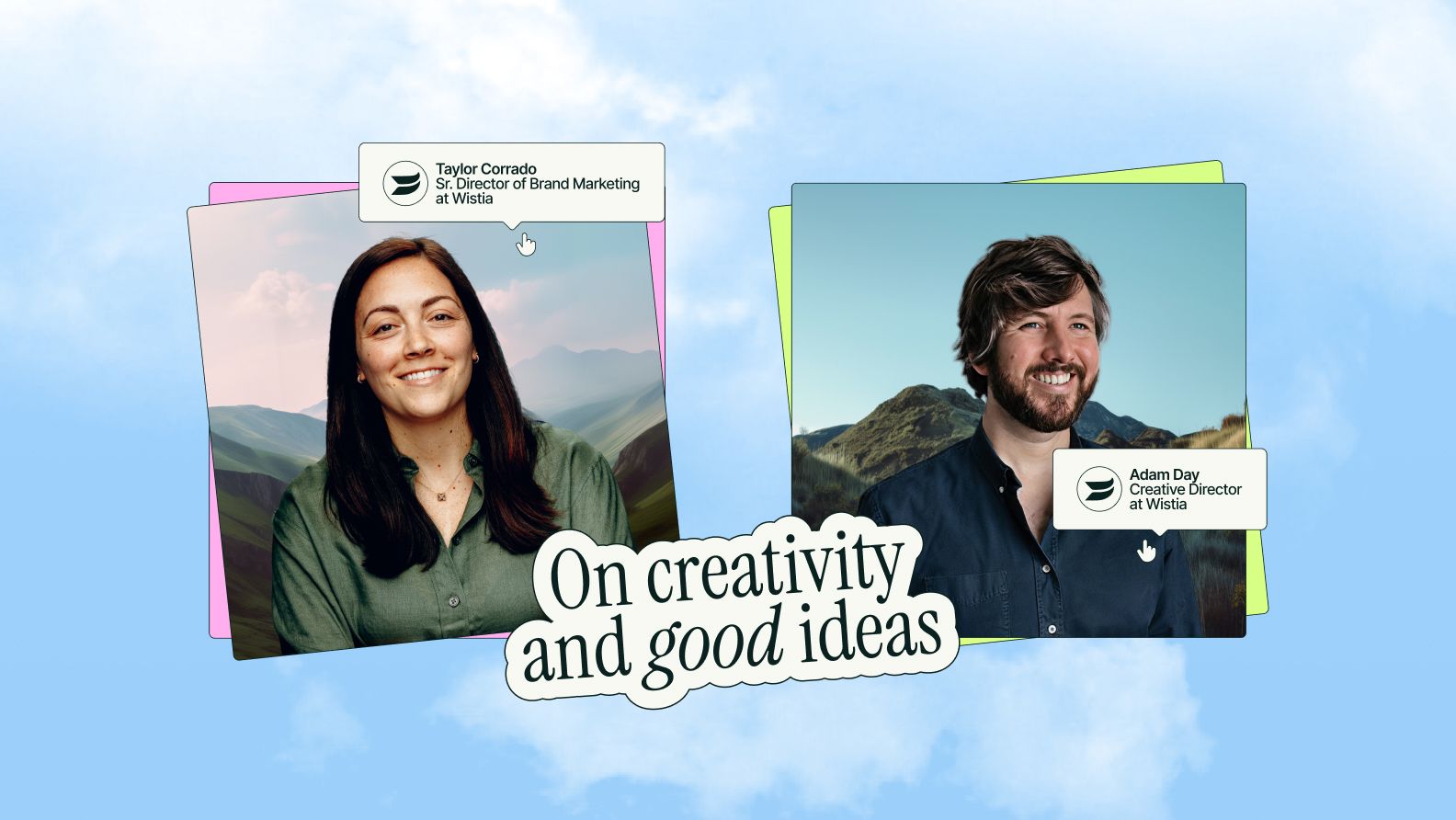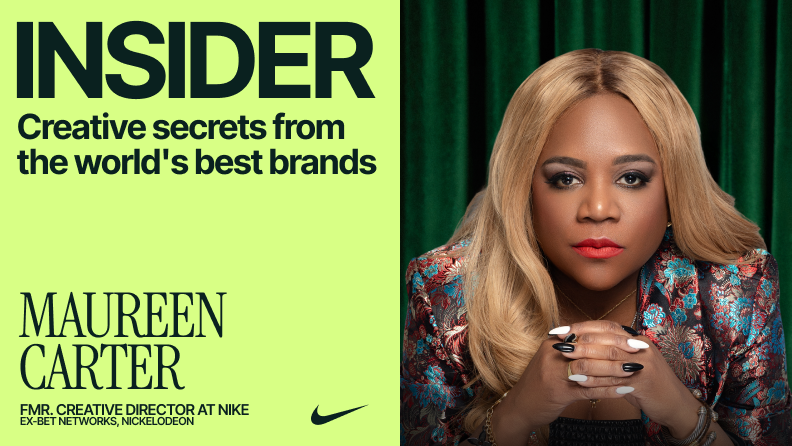10 Business Books Successful Design Leaders Should Read

You have to read to lead.

As you grow your career and move into leadership roles, you have to leverage more than your design skills. You also need to speak the language of business and strategy. Especially if you're a design leader in a corporate setting where stakeholders come from many different backgrounds.
One of the best ways to do this is by reading a wide array of new and classic business books on strategy, leadership, marketing and other key topics. Here’s a list of 10 books gathered from conversations with Adam Morgan and other industry leaders.
10 Books That Level Up Your Leadership
In his own career, Morgan has found that being well-versed in the language of business and how your peers are thinking helps you strengthen both your strategic thinking and creativity, get better at selling ideas and become a better creative leader.
- Creative Strategy and the Business of Design
- The Discipline of Market Leaders
- Herding Tigers
- The Infinite Game
- Play Bigger
- Pocket Full of Do
- Positioning—The Battle for Your Mind
- Radical Candor
- Strategy is Your Words
- A Time to Think
- Bonus Book
Creative Strategy and the Business of Design
Remaining relevant as a creative professional takes more than creativity—you need to understand the language of business. The problem is that design school doesn't teach the strategic language that is now essential to getting your job done.
—Author Douglas Davis, Strategist and Professor
Designers who want to be business leaders need to learn to speak the language of business and be ambassadors for the value of design. Right-brain creative thinkers can and should embrace left-brain business skills to help cross the divide, create alignment and drive the innovation you strive to create.
The Discipline of Market Leaders: Choose Your Customers, Narrow Your Focus, Dominate Your Market
Companies that have taken leadership positions in their industries typically have done so by narrowing their business focus, not broadening it. They have focused on delivering superior customer value in line with one of three value disciplines—operational excellence, customer intimacy, or product leadership.
—Authors Micheal Treacy and Fred Wiersema, Harvard Business Review
Listen to what your customers are saying and, instead of trying to be everything to everyone, undercover the value propositions and messages that really matter. The most successful companies win by focusing on the highest quality products, lowest prices or best customer experience. The key word is “or.” You can only pick one.
Get the book. | Follow Micheal Treacy and Fred Wiersema.
Herding Tigers: Be the Creative Leader That Creative People Need
The old adage that leading creative people is like herding cats is wrong. It’s more like herding tigers.
—Author Todd Henry, Founder, Accidental Creative
When you make the transition from being an individual contributor to becoming a people leader, expectations change. Instead of doing the work, your role is empowering others to do the work—all while validating the strategic relevance, quality and inherent business value of the work being done.
Herding Tigers teaches creative directors how to lead through influence, creating a stable environment for taking bold risks. You will also learn how to draw Darth Vader. If that’s not a selling point, I don’t know what is.
Get the book. | Follow Todd Henry.
The Infinite Game
In infinite games, like business or politics or life itself, the players come and go, the rules are changeable, and there is no defined endpoint. There are no winners or losers in an infinite game—there is only ahead and behind.
—Author Simon Sinek, Leadership Evangelist
LIfe isn’t like a game of chess. No matter how elegantly you may want to enforce finite rules and guidelines, the real world is infinite. The rules will always change. The only thing you control is how you play. True leaders embrace this through clear values, trusting teams, worthy rivals, existential flexibility and the courage to lead.
The book is a battle cry for the tigers in all of us who want to challenge the status quo and contribute to a meaningful reality that’s truly greater than the sum of its parts.
Get the book. | Follow Simon Sinek.
Play Bigger: How Pirates, Dreamers and Innovators Create and Dominate Markets
Winning today isn’t about beating the competition at the old game. It’s about inventing a whole new game—defining a new market category, developing it and dominating it over time. You can’t build a legendary company without building a legendary category. If you think that having the best product is all it takes to win, you’re going to lose.
— Authors Al Ramadan, Dave Peterson, Christopher Lochhead and Kevin Maney
In the world of business, having the best product doesn’t guarantee success. Guaranteeing success is creating entirely new categories and solving problems customers didn’t even know they had. Using first-person interviews and data analysis, the authors break down the inner workings of “category kings” like Amazon, Salesforce, Uber and IKEA.
Get the book. | Follow Al Ramadan, Dave Peterson, Christopher Lochhead and Kevin Maney
Pocket Full of Do
Your mindset affects everything you think, say and do. What you think, you become. And when you believe in yourself, others will, too.
—Author Chris Do, Founder and CEO, The Futur
Written from the perspective of a successful business owner and coach, this book examines how design leaders approach relationships, creativity, beliefs, pricing, sales, negotiation, marketing and mindset. The topics are wide-ranging and the knowledge is bite-sized and inspirational. Of course, since it’s coming from a designer, even the paper choice and layout have been carefully considered.
Get the book. | Follow Chris Do.
Positioning: The Battle for Your Mind
The essence of positioning thinking is to accept the perceptions as reality and then restructure those perceptions to create the position you desire.
—Authors Al Ries and Jack Trout
When it comes to positioning, the battle is actually for the minds of your consumers. You can’t just blindly communicate the benefits of your brand. In a world of information overload, you have to find a way to fit into the web of existing knowledge patterns spun within your customers’ minds.
Far from a passing fad, the concept of positioning introduced in this book has been recognized by the American Marketing Association as one of the most influential marketing paradigms in the United States.
Get the book. | Follow Al Ries and learn about Jack Trout.
Radical Candor: Be a Kickass Boss Without Losing Your Humanity
Your entire working life you’ve been told to be professional. Too often, that’s code for leaving your humanity at home. To build strong relationships, you have to care personally.
—Author Kim Scott, Co-Founder, Just Work and Radical Candor
Providing creative feedback is hard enough. Then there’s offering constructive feedback in a range of business settings—from advising direct reports to strategic debates with senior leadership. This book will help you understand why “the single most important thing a boss can do is give, receive and encourage guidance.”
Get the book. | Follow Kim Scott.
Strategy is Your Words: A Strategist’s Fight for Meaning
Creative minds use words to expose truth, not hide from it. Creative minds want to free their words, not constipate them. Fierce brains abound in strategy, but too many of their public words enter a corporate-business-park dystopia.
—Author, Mark Pollard, Strategy CEO
There are many different types of communication. However, Mark Pollard believes that words have the power to define strategy. While the book focuses on account planning (sales planning), the concept of choosing your words wisely and sticking with them is universal and timeless. Pollard also says that the best strategy books are books on writing.
Get the book. | Follow Mark Pollard
A Time to Think: Listening to Ignite the Human Mind
Attention, the act of listening with palatable respect and fascination, is the key to a thinking environment. Listening of this caliber is enzymatic. When you are listening to someone, much of the quality of what you are hearing is your effect on them.
—Author Nancy Kline, Founder, Time to Think Leadership and Development Company
A life skill, effective listening is also a crucial component of leadership. In her foundational book, Nancy Kline outlines the 10 components of a thinking environment: attention, equality, ease, appreciation, encouragement, feelings, information, difference, incisive questions and place.
BONUS BOOK: Sorry Spock, Emotions Drive Business: Proving the Value of Creative Ideas With Science
Today, more than ever, creative professionals need a concrete answer to the question, ‘Do creative ideas work better?’
— Adam Morgan, Senior Director Brand + Creative, Splunk
Inspired by his ongoing curiosity about the interplay between creative ideas and strategic execution, Adam Morgan uses neuroscience to show how emotional experiences create more effective results. Want data-backed reasons to convince your C-suite why creative ideas are better for business? Morgan has your answers.
Get the Book. | Follow Adam Morgan. | See our interview with Adam on leadership
In Between Chapters...
- Keep learning on LinkedIn. Use the links below the summaries to follow your favorite authors.
- Follow Superside. Stay up to the moment on the latest insights and be the first to hear about our LinkedIn Live events.
- Download our free design leadership guide. Get insights from industry leaders on how to build high-impact design teams.
- Gather and grow with fellow leaders. Register for our live interactive learning series featuring topics at the intersection of design and marketing growth.
- Keep reading and leading with these bonus book lists
Thank You Thought Leaders
We’re incredibly fortunate to work in a creative and dynamic environment where we can provide platforms for industry leaders to connect and learn from each other. The brilliant minds in this industry inspire us every day.
We’d also like to say a personal thanks to Adam Morgan, for all the insights he’s been sharing in our LinkedIn Live Session, Design Leaders Guide and other events, like our Momentum Summit.
Ex-copywriter turned content strategist with two decades of creative chaos under her belt. She's helped scale content, brands and frozen pies—yes, really. Now? She empowers creatives to work smarter, not smaller.
You may also like these

Results with heart: Inside Superside's empathy-fueled path to performance
Creative impact can’t be captured by a single metric or mood.But it is visible in results—and few understand this balance better than Superside's Gradwell Sears, Chief Creative Officer, and Josh Mendelsohn, Senior Director of Product Marketing. In our latest guide, Inside Great Creative Partnerships, Sears and Mendelsohn discussed how creative and marketing leaders must harmonize emotional resonance with measurable business performance to drive real impact.Spoiler: Results matter, but so do the people behind them. From ROI to vibes and empathy to partnerships that thrive, keep reading to see:Why creative is foundational to performance
Open doors, unlock ideas: Inside Wistia's creative partnership
An SNL-inspired twist on a classic campaign.An analogue book that’s shipped over 700 copies around the world.A TikTok series narrated by a psychic raccoon.Okay, that last one’s made up. But one thing’s for sure, the creative and marketing teams at Wistia don’t just bring the creativity—they crank it to eleven.That’s why we had to speak with them for Superside’s latest guide, Inside Great Creative Partnerships. Wistia’s Adam Day, Creative Director, and Taylor Corrado, Senior Director of Brand Marketing, were kind enough to oblige and spill their secrets, including:
Get off the conveyor belt: 22 leaders on the secret to great work
“It can’t be an assembly line. You have to bake in collaboration—brainstorms, thought starters—before your jump to production. That’s where the best ideas come from.”Kevin Branscum, Senior Director of Brand Marketing at Typeform, shared this thought when we interviewed him for our latest guide. And he wasn’t the only one. The concept of partnerships—true collaboration between marketers and creatives—came up over and over again as the lynchpin for any successful campaign.That’s why we called the guide, Inside Great Creative Partnerships.It digs into hard-earned, real-life lessons from 22 top creative and marketing leaders shipping great work, together. We’ve already spilled their number one secret. But there are many more big ones, like:The source of great ideas








